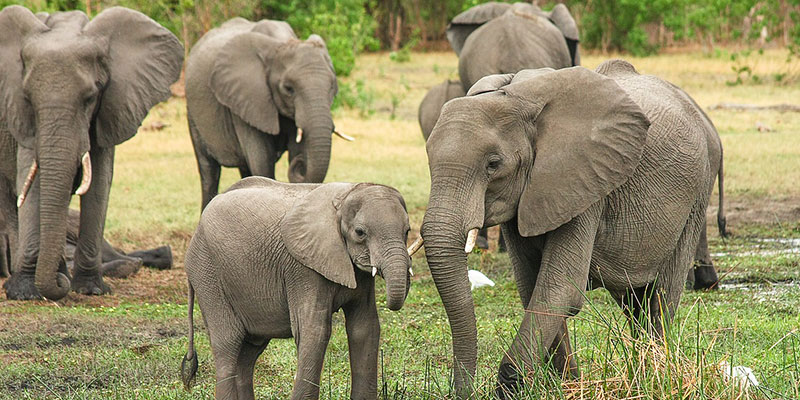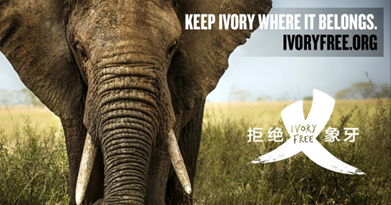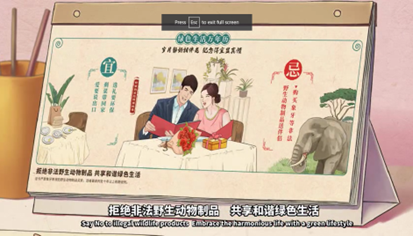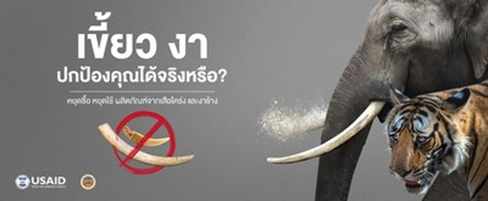Ivory demand reduction approaches: Teething problems
Posted on Friday 17 February 2023

Beyond trade bans, efforts to directly reduce consumer demand for African elephant ivory primarily exist through awareness-raising campaigns and educational initiatives. Over the past decade, these have been heavily implemented across China and neighbouring southeast Asian countries to deter ivory consumption.
These campaigns typically use mass media strategies to convey information about elephant poaching in Africa and the important role of elephants in healthy African ecosystems, such as in Images 1 and 2 below.

Image 1. Mom, I have teeth Campaign, International Fund for Animal Welfare (2008)
However, the Convention on International Trade in Endangered Species of Wild Fauna and Flora (CITES) and its party member states have increasingly recognised that these strategies are not enough to curb long-term ivory demand alongside ongoing traditional illegal trade interdictions and anti-poaching efforts.
I am interested in the effectiveness of the approaches undertaken to curb consumer demand for ivory, commonly referred to as demand reduction. By integrating methods found in the field of Social Marketing with specific ivory consumer research, I am assessing the potential for actual behavioural change across the landscape of demand reduction approaches. This research will help us identify how, when and why different strategies may have influenced ivory consumers over time and can help to inform future demand reduction strategies.

Image 2. Ivory Free Campaign, WildAid (2014) Image source: https://wildaid.org/wildaid-launches-ivory-free-campaign/
Demand reduction for ivory is designed and implemented to influence behaviours in complex socioeconomic and culturally specific landscapes. Therefore, our analysis integrates these important nuances to critically reflect the likelihood of a campaign’s effectiveness in its specific setting. For example, we incorporate knowledge as to why ivory is still a coveted natural material, deeply valued across different societies for its financial, spiritual, aesthetic and cultural investment into our analyses of different campaigns to reflect the potential effects a campaign may have on its target consumers. Our research shows that these critical value systems have only recently been incorporated into demand reduction strategies.
For example, in the 2019 campaign in Image 3., the action of gifting an ivory bracelet as a thoughtful gesture as part of a celebration is illustrated and juxtaposed with an emotional reaction by the recipient as the gift is unwanted due to the knowledge elephants were killed for it. Gifting is an important behavioural context for ivory consumption in China and understanding the nuances of where, when and by/for whom ivory may be gifted is critical for campaigns that directly target gifting behaviours.
Recently in a 2022 campaign in Image 4., a community-level influencer approach was used to challenge the spiritual beliefs surrounding the use of ivory amulets in Thailand. This campaign tried to highlight belief systems around ivory amulet usage without denouncing them as incorrect, showing an appreciation of the different value systems, whilst also highlighting some of the potentially fatal issues with solely relying on amulets for protection.

Image 3. Wildlife Free Gifting Campaign, USAID Wildlife Asia (2019) Source: https://www.usaidrdw.org/campaigns/wildlife-free-gifting
For demand reduction to result in behaviour change that leads to decreased elephant poaching, problems such as weak theoretical and non-adaptive design choices, inappropriate messengers for implementation and weak adaptive monitoring and evaluative insight capacities need to be addressed (Greenfield & Veríssimo, 2019; Veríssimo and Wan, 2019).
Fortunately, we have already seen some progress on this front, as movement from within CITES and its coordinating partners to improve demand reduction approaches is underway. For example, detailed guidance grounded in the approach of social behavioural change communications and informed by multi-level stakeholder workshops in China (2015), Hong Kong (2016) and online (2021) were adopted in November 2022 at the latest CITES Conference of the Parties in Panama. This progress shows a willingness by parties to engage with evidence-based approaches for demand reduction strategies going forward.

Image 4. No Ivory, No Tiger Amulets Campaign, USAID Wildlife Asia (2022) Image source: https://www.usaidrdw.org/campaigns/no-ivory-no-tiger-amulets
